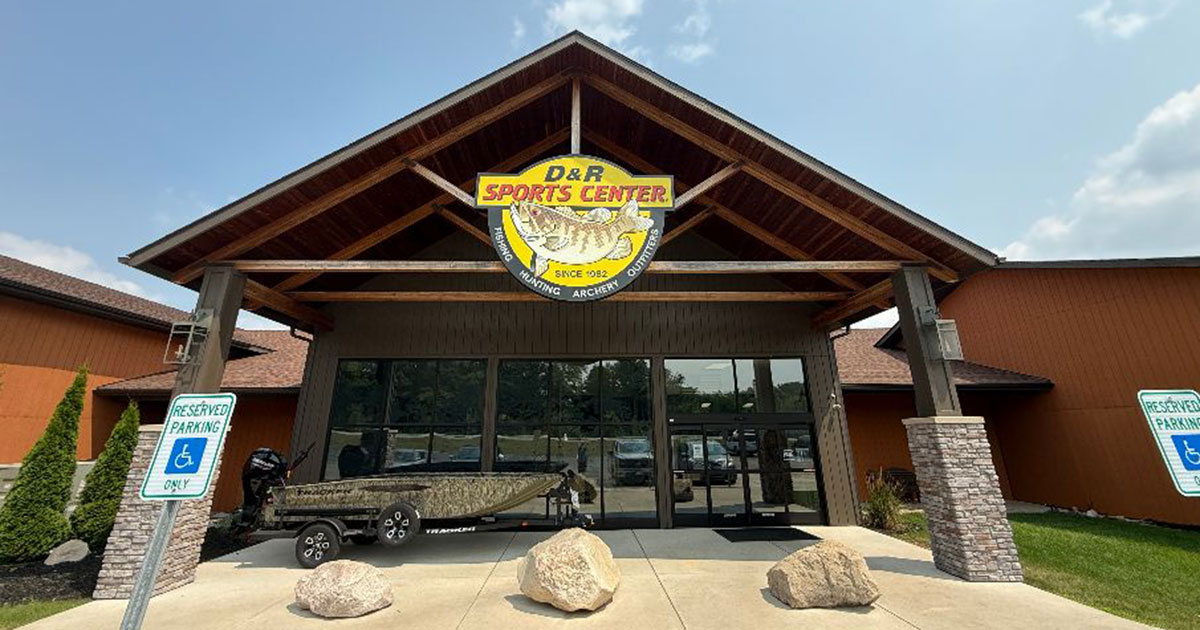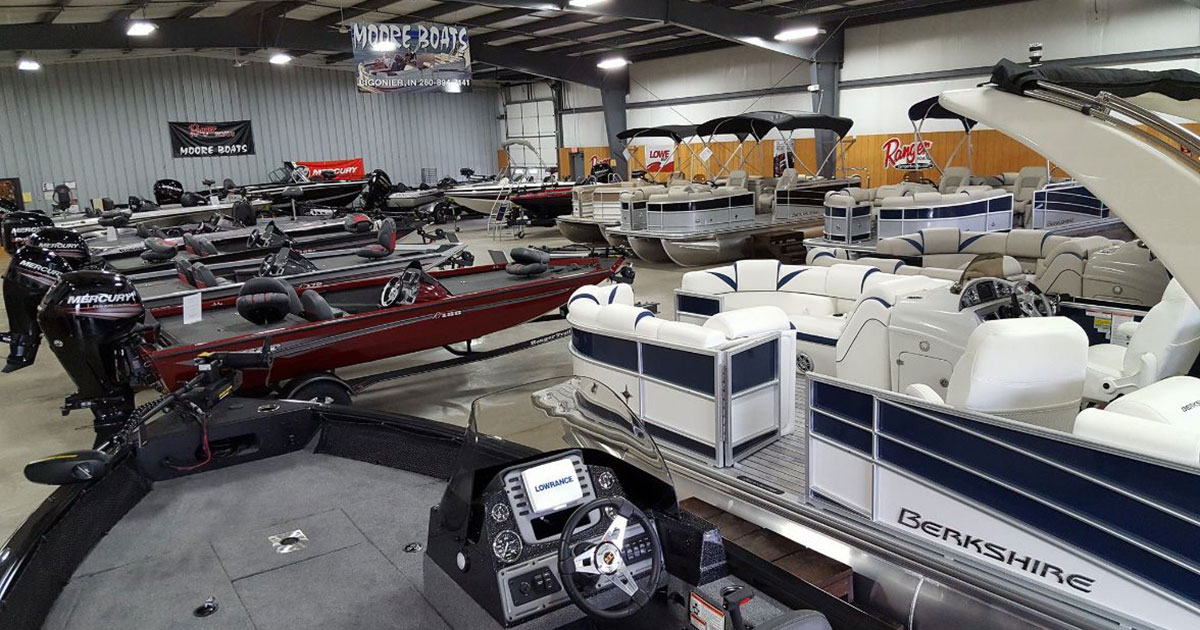
- Details
By Louie Stout

D&R Sports Center in Kalamazoo needs little introduction. It’s arguably one of the biggest independent outdoor stores and boat dealerships in the country.
And it continues to grow, with the most recent expansion of the retail store in 2021, to include a larger gun/hunting and tackle section and a separate boat showroom along with an expansive service department.
The boat service department offers 4 boat rigging bays, 9 service bays and 4 boat detail and delivery bays.

What began in 1982 as a 1,200-foot retail outlet has grown into 21,000 square feet of retail space, 9,000 square feet of boat showroom and 72,000 feet of indoor boat storage, says Jonathon VanDam, general manager of retail operations, and an accomplished pro tournament angler.
- Details
This article is another in our "Sponsor Spotlight" Series
By Louie Stout

You’d be hard pressed to find a boat dealership with more experience than what Moore Boats in Ligonier, Ind. has to offer.
First, Todd Moore has owned the business for 32 years and his chief mechanic Dewey LeCount has been there throughout while fellow mechanic Ryan Grote has been there 17 years. In this era of mechanics jumping jobs, that speaks volumes to the shop’s commitment to providing solid service and stability.
- Details
By Louie Stout
If you have hopes of the new DNR boat launch on Eagle Lake to be developed anytime soon, forget about it.
Darrin Schaap of Clear H20 Tackle and I had a conference call last week with DNR officials who are overseeing the project.
For those unfamiliar with the project, the DNR purchased land to install a new and safer boat launch on the east side of Eagle Lake in August, 2014.
That’s right 11 years ago.
Since then, the Eagle Lake Improvement Association has filed multiple lawsuits – which they lost – yet continue to throw roadblocks at the DNR to prevent the development.
- Details
By Louie Stout
Michiana Outdoors News publishes a lot of tournament results and relies upon anglers to provide some insight into how the fish were caught.
The purpose is to recognize successful anglers, but more importantly, share information about various lakes and successful techniques that are working in the Michiana area.
Tournament directors have a lot going on, so we’re extremely grateful that tournament directors make the effort to get us details and photos and some basic information about how the fish were caught. We request the winning pattern, depth, key lures and any other information the directors care to pass along to us.
We’re especially appreciative for what we get from Brendon Sutter (Tackle Shack), Bill Mathews (Stars and Stripes) and Rick Kedik (CastingCouples and Michiana Singles) who often provide additional quality details on their events.
Yet, tournament directors can only pass along information that they receive from top finishers.
Since I review all the information – and even participate in a few of these events - it is apparent that some competitors aren’t being honest.
That not only blows my mind, but diminishes the credibility of this website as well as the angler.
If it’s so important that you hide that you won a couple hundred bucks skipping docks or scoping a jig and minnow in 50 feet, just tell the tournament director, “I’d rather not say.”
That’s what Trevor Paulus said after winning The Tackle Shack tourney on Lake Charlevoix this summer. He had his reasons and we can respect that.
It’s a lot better than lyin’.
So, if you’re fortunate enough to get a check at one of these Michiana derbies, please provide legitimate details.
We aren’t asking for your secret spot. We just want basic, honest details, like, “half ounce green pumpkin jig on outer weed edges,” “Pop Rs over shallow weeds,” “scoping suspended bass with jig/minnows in 40 feet,” “cranking Rapala crankbaits on 10-foot weed edges,” or whatever pattern worked best for you.
Or, simply tell the director, “I’d rather not say.”


